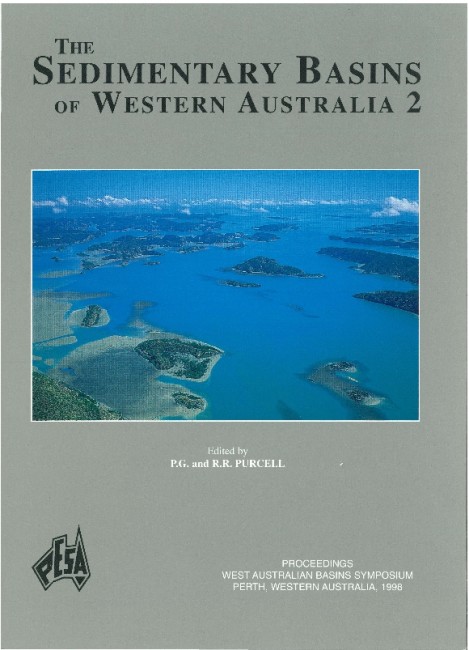Publication Name: The Sedimentary Basins of WA
Authors: Philip A. Symonds, Sverre Planke, Oivind Frey and Jakob Skogseid
Publication Volume: 2
Date Published: December 1998
Number of Pages: 33
Reference Type: Book Section
Abstract:
A systematic interpretation of modern deep-seismic and OBS refraction data, combined with existing seismic and well data has revealed the presence of an extensive magmatic province along the western Australian margin. The magmatism is represented by well characterised volcanic features - multiple seaward-dipping reflector sequences and hyaloclastic buildups along the Cuvier and Gascoyne margins; sill intrusions and magmatic underplating beneath the southwest Exmouth Plateau; flood basalts on the Rowley Terrace and Scott Plateau, and subaerial basalt flows penetrated in wells in the adjacent Browse Basin; and Neocomian bentonitic claystone derived from ash falls around the margins of the Exmouth Plateau. The Wallaby and outer Scott plateaus appear to be composite features composed of extended continental blocks modified and covered by volcanics. All these volcanic features are thought to be the result of transient voluminous magmatism around, or just following, the time of continental breakup - Oxfordian, in the Argo Abyssal Plain in the north, and Valanginian, in the Gascoyne, Cuvier and Perth abyssal plains, to the south. Widespread lower crust/upper mantle extension appears to have played an important role in the continental breakup process. The timing and distribution of the volcanic provinces and features is best explained by models that combine a broad, long-lasting region of elevated asthenospheric temperatures, possible plume related, with dynamic processes associated with rift, breakup and transform tectonism.The tectono-magmatic evolution of the western Australian margin has affected its basin development and hydrocarbon potential by influencing vertical movements, sediment transport, heatflow and basin geometries. In some areas, the extrusive and intrusive volcanics produced around breakup time severely degrade seismic imaging of the associated sedimentary section. An improved understanding of the volcanic processes should lead to better seismic imaging and reduced exploration risk, and will become increasingly important as exploration progresses into ever deeperwater towards the continent-ocean boundary.


